Virtual Reality
Explore Real Estate in Virtual Reality: A Guide to VR Real Estate
Published
6 months agoon
By
VRLOL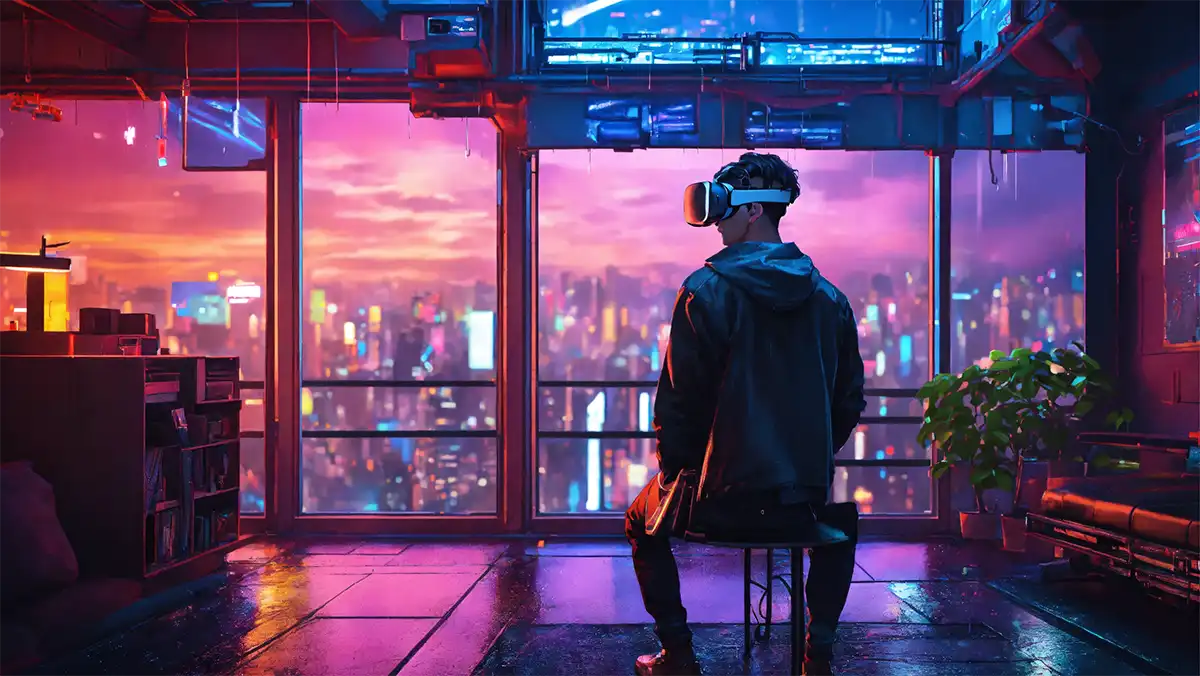
Virtual reality real estate
These days, virtual reality (VR) is the talk of the town. But did you know that you can also use VR to explore real estate? That’s right, with the help of VR, you can now take a 3D tour of potential investment properties and view them from the comfort of your own home.
For some, VR real estate exploration may seem like a dream come true. But for others, the concept can be intimidating. After all, the real estate market is highly complex and traditional viewings are often difficult to arrange. Not to worry, though, as this guide has all the details you need to get started with virtual reality real estate.
We will cover everything from setting up the necessary hardware to finding the best VR-ready properties and services. We’ll also provide tips for making the most of your virtual reality real estate experience. So sit back, relax, and get ready to explore some of the world’s finest real estate in virtual reality.
Quick Summary of Key Points
Virtual reality real estate offers many benefits, including providing a more immersive and realistic view of the property for potential buyers. Additionally, it saves time and money for both buyers and sellers by allowing people to view listings remotely.
What Is Virtual Reality Real Estate?
Virtual Reality (VR) Real Estate takes the traditional approach to real estate and adds a cutting-edge technology spin. This technology involves putting on a headset that projects a 3D digital world within which users can explore potential properties by being immersed in an environment that feels lifelike. With the use of VR, agents and brokers have the chance to provide prospective buyers with an incredibly interactive home tour or showcase multiple properties simultaneously for a seller.
The actual impact of using VR for real estate is currently being debated. While some experts advocate its use as part of giving clients a more realistic impression when exploring homes, others are concerned that relying on this form of home tours could reduce valuable aspects including smell and touch. Advocates suggest that it opens up opportunities such as showcasing international properties without having to leave the country, with pros saying agents can show clients maximum listings in minimal time while keeping them safe from the Covid-19 pandemic. Some people may argue that there are many benefits to physical viewings due to getting an accurate sense of scale for example, while opponents might worry that immersive tech carries privacy risks.
This technology certainly has the potential create easier transactions between agents and brokers, but the efficacy of how it translates into sales is still uncertain. To understand this kind of impact fully, we must look deeper at how virtual reality can benefit brokers and agents –and how it may actually be able to make things easier both practically and financially for everyone involved.
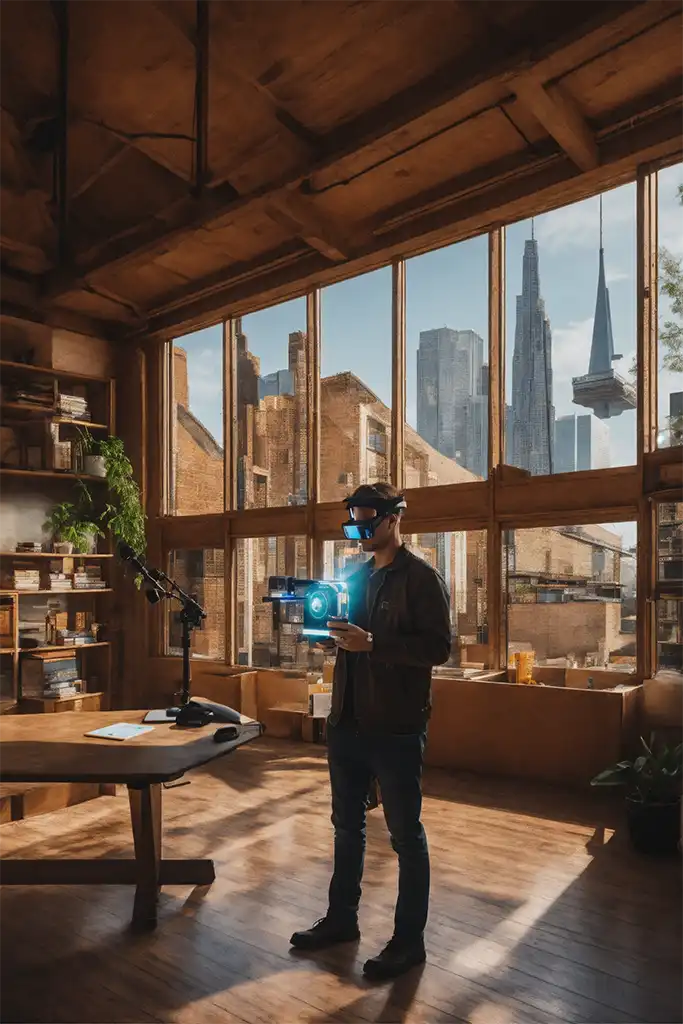

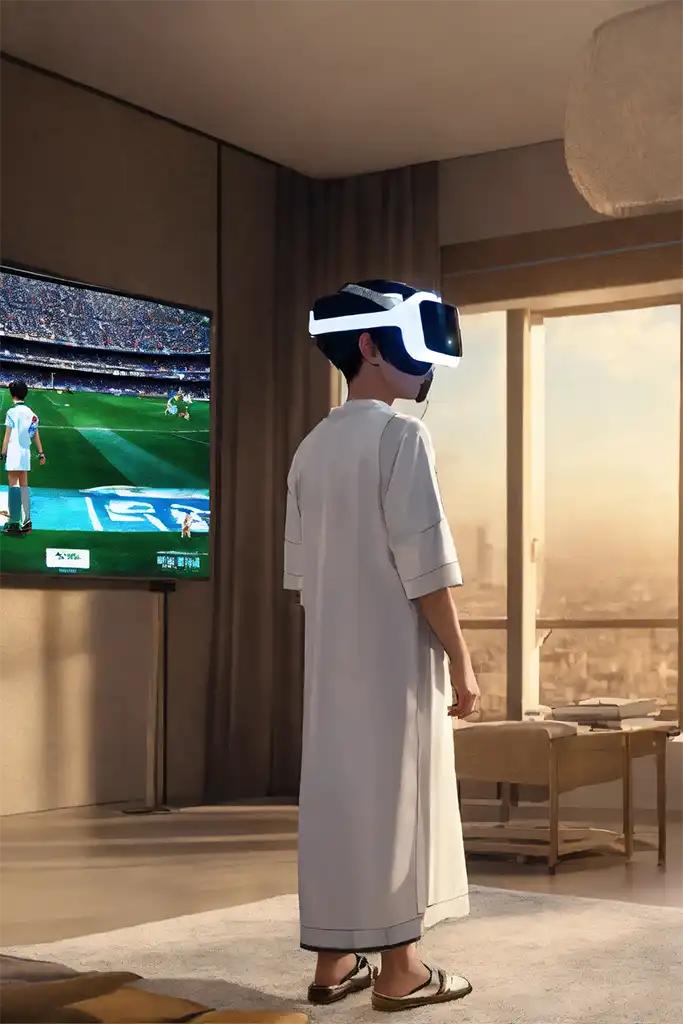


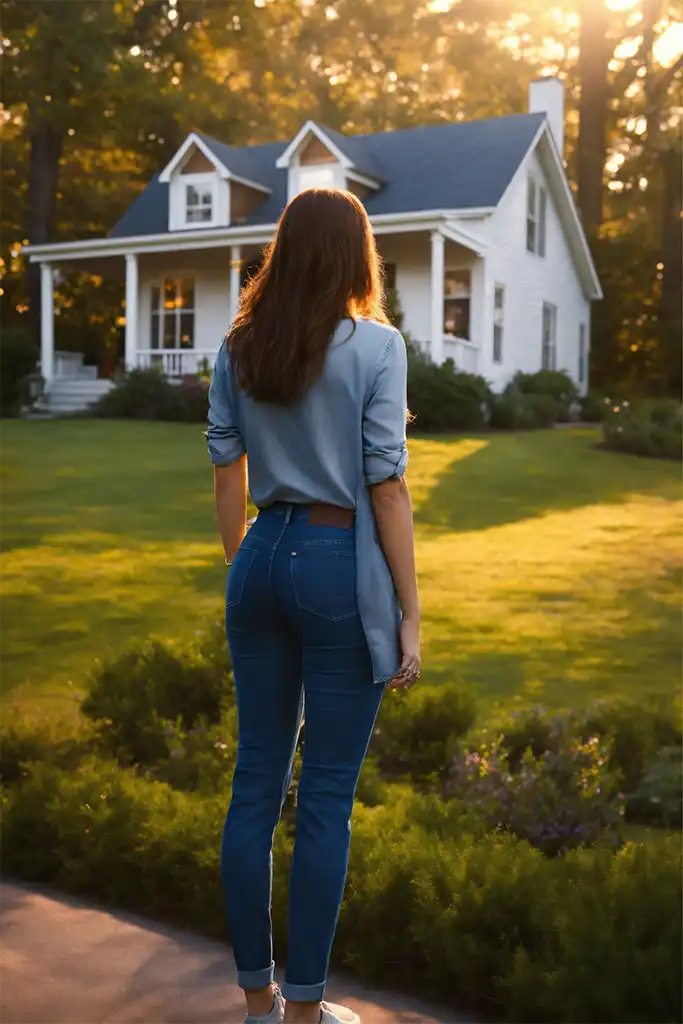
How Virtual Reality Can Benefit Brokers and Agents
Virtual reality (VR) technology is revolutionizing the real estate industry, offering countless benefits for both brokers and agents. For brokers, VR technology can help simplify the management of larger portfolios by making business decisions more efficient and informed than ever before. Agents are finding that clients can get a better sense of a property virtually than they would be able to on a regular tour. By leveraging VR technology, agents can help their clients explore multiple homes without ever having to leave the comfort of their own home.
On the flip side, some may argue that using VR technology is a costly investment that may not be worth the reward. Others may point out that VR cannot truly replace an in-person visit. However, studies have in fact shown that customers who view a property virtually were more likely to make an offer than those who did not [cite]. This suggests that investing in VR technology can lead to increased sales, as well as save agents time and money by eliminating unnecessary visits to properties.
In addition, utilizing virtual reality solutions has been proven to reduce customer confusion and dissatisfaction when buying or renting a home, leading to greater productivity for brokers and agents [cite]. With virtual reality solutions becoming more widely available and affordable, this makes now the perfect time for any broker or agent looking to incorporate this powerful tool into their workflow processes.
As brokers and agents become familiar with how VR real estate works, they will become more comfortable in helping their clients tour properties with these new tools. The next section will discuss further how these tools can be utilized effectively when exploring potential properties virtually.
Helping Clients Tour Properties
While virtual reality is an incredibly helpful tool for agents and brokers to make more informed decisions when guiding potential buyers, it also provides clients with opportunities not previously available. Utilizing VR technology in the real estate field offers a level of access that has never been seen before, allowing clients to tour properties from any physical location — a valuable advantage for long distance home seekers. Potential buyers are no longer limited to only seeing the images or videos of homes online – now they can take a walk-through of the entire space without even leaving their home.
Furthermore, in areas where property viewing may be dangerous due to environmental conditions such as extreme temperatures or even some political conflicts, VR technology allows agents to provide secure and safe experiences for people who cannot physically participate due to these external factors. This helps unlock certain properties for sale to many more interested buyers than was possible before.
The convenience and accessibility provided by virtual reality technology for potential homebuyers revolutionizes the traditional property viewing process, making them far easier and safer experiences than they were before. By equipping agents and brokers with the tools necessary to give their clients access to remote sites with VR capabilities, not only will brokers have an edge over competitors, but they can also ensure that each client’s needs and interests are taken care of quickly and efficiently. With this newfound power of leverage comes an increased responsibility to show genuine commitment in providing quality services and superior customer satisfaction.
On top of increasing buyer confidence by delivering an immersive experience like none other, using Virtual Reality technology also helps reveal suspicious discrepencies between details listed on paper versus what can be observed virtually – this extra layer of protection urges caution against fraud listings and fake details appearing in the real estate market.
Helping clients tour properties efficiently via virtual reality is a game-changing practice which opens up numerous opportunities for both buyers and sellers alike while establishing trust within the transaction process. In order to maintain this bridge between parties involved in the deal, investments must be made into marketing strategies that elevate the buying/selling experience through new technologies. To that end, let us explore how we can capitalize on such investments in our next section.
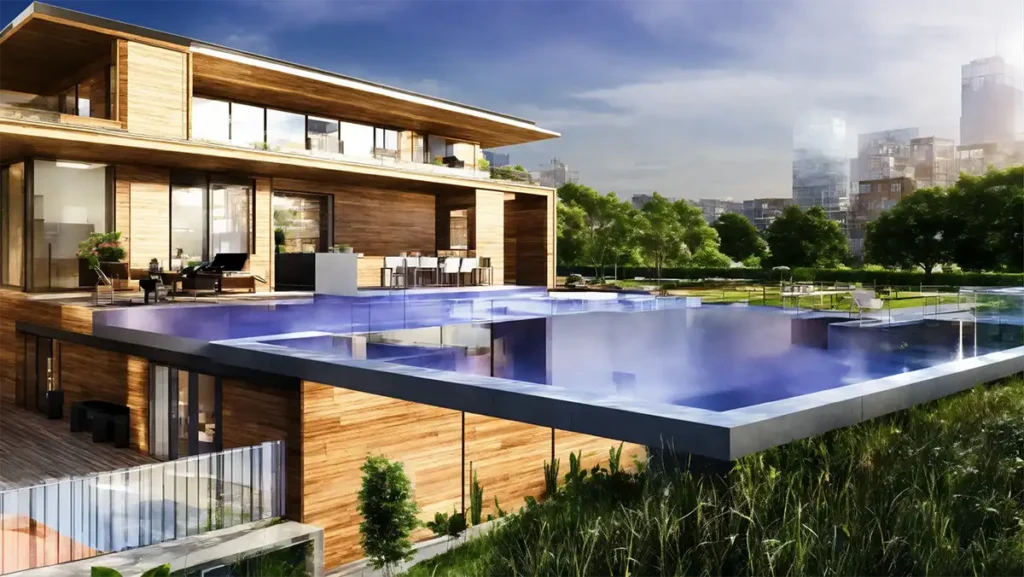
Marketing Investments in Technology
As the real estate market continues to grow exponentially, investements in technology are becoming increasingly important. With virtual reality (VR) technologies, marketing your services and properties will become more efficient for real estate agents. In many ways, marketing investments in technology can be beneficial for real estate businesses.
First, digital marketing with VR real estate technology will be faster and more accessible than traditional marketing techniques. Agents will be able to provide potential clients with virtual tours of the properties they’re interested in — right on their own devices! This eliminates the need for physical visits and makes it more possible to promote your services through other platforms such as social media or email campaigns.
Second, these technologies can provide a competitive advantage over other real estate businesses that do not use them. Not only do they make it easier to advertise and showcase properties remotely, but since they are relatively new technologies, using them could set your business apart from others in the area.
Despite the obvious advantages of embracing newer technologies, there are also risks associated with investing too heavily in such solutions. Investing too much money in developing new VR tools could drain your budget without having a return on investment — which is why it’s important to assess how much you need before committing to anything. Additionally, advances in technology happen quickly and what works today may not work tomorrow; keeping up with the changing platform could require substantial resources that some small-scale businesses might not have available.
In summary, leveraging any technological development has its benefits and risks; however when done strategically investing in VR technologies can help your business stand out amongst competition by providing access to modern features like virtual tours. While this transition should not be taken lightly and should not involve too much risk taking, it is worth exploring if done properly because these tools will continue to evolve even further in the future and used effectively may be what sets you apart from the competition going forward. With that being said, it is now time to shift our focus on how these new VR tools will ultimately affect buyers and the entire local real estate market — part of what we’ll discuss next.
A 2017 study found that 65% of realtors believe that virtual reality tours will have a positive impact on their business.
A 2018 survey showed that 84% of consumers surveyed said they would like to use a virtual reality tour when buying or renting a property.
According to Forbes, the global virtual reality market for real estate in 2019 was valued at $845 million USD and is projected to grow to more than $3 billion by 2025.
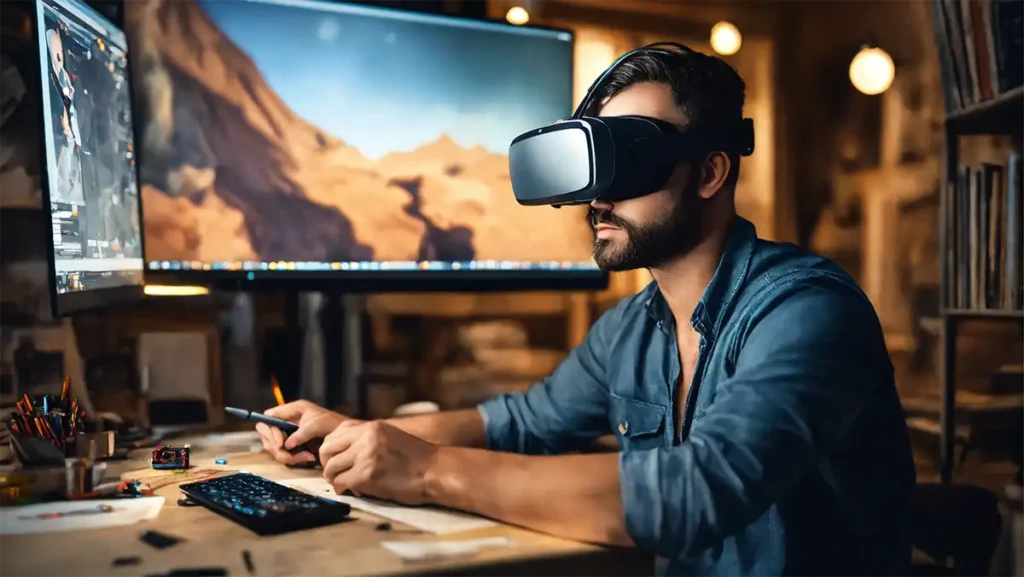
Impact on the Market and Buyers
The investments in virtual reality technology for real estate purposes has had a sizeable impact on the market and buyers alike. Proponents of the technology argue that it allows buyers to get a better sense of the space within an affordable cost for them and a quicker time frame than physical visits. Consequently, this may result in quicker transactions, since buyers can visualize their life in potential homes before sinking money into a real-estate purchase. It is also argued that this technology can invite more people from all regions and levels of income, as they don’t need to invest much money or time to see the property available from different locations.
On the other hand, many have raised legitimate concerns over the demise of personalized experiences through tours with expertise from agents and designers. For example, while virtual reality emphasizes what a room could look like, it cannot accurately capture creativity that is brought out when looking at a physical space through décor and furniture; something agents can easily do with ease while having face to face conversations with potential buyers. Therefore virtual reality technology may fail to give proper representations on certain details, which are best noticed in person.
At this moment its too soon to tell if these technologies will become fully adopted by real estate industry, but certainly virtual reality has provided incentives that would help streamline the buying process for all types of consumers. And although there are strong debates over each side, these debates largely focus on the idea of long term investments verses short term payoff.
It’s evident that investing in technology enhances the visibility associated with exploring real estate options. Now let us shift gears towards reaping those benefits to gain legitimacy in this ever changing landscape.
Reaping the Technology Benefits
As the real estate industry adapts and innovates in order to stay competitive, embracing virtual reality technology can bring significant benefits to both buyers and sellers. For buyers, the ability to tour a property without being physically present presents an advantage – they can view a property in great detail from around the world if need be. This could eliminate much of the tedious task of physically traveling to the desired location to evaluate the property. Real estate agents can also reap the rewards of this technology by utilizing it to better showcase listings and improve their ability to engage with potential buyers.
At the same time, there are some potential drawbacks that arise when incorporating this new technology into the marketplace. Virtual tours cannot always provide a true representation of what it’s like to stand inside of a property, as it lacks certain nuances that are necessary for a complete impression. Buyers may still have to travel to visit certain properties if they need more than virtual assistance in evaluating a location.
In spite of these drawbacks though, virtual reality offers real estate professionals an opportunity to revolutionize how they approach buying and selling homes. In addition to improvements for showcasing listings, having access to research regarding existing properties and bids on land will be valuable resources that have yet to be tapped into. This puts real estate agents in prime position to make sound decisions with detailed insights they couldn’t access before this technological advancement.
The widespread use of virtual reality in real estate can provide tangible market advantages that open up new possibilities across the board. Combining these advancements with traditional strategies is sure to redefine how buyers engage with properties while offering them an improved viewing experience like never before. As buyers and sellers become increasingly familiar with this technology, they’ll likely seek out agents that offer VR services during their transactions which could be beneficial for those who take advantage of early adoption opportunities. With many applications now available for seamless integration within the market, staying ahead of emerging trends will only become more important moving forward.
The implications of virtual reality technology represent just another step forward in modernizing the real estate industry, but even bigger opportunities lie ahead in finding the perfect virtual reality real estate properties for buyers and sellers alike.
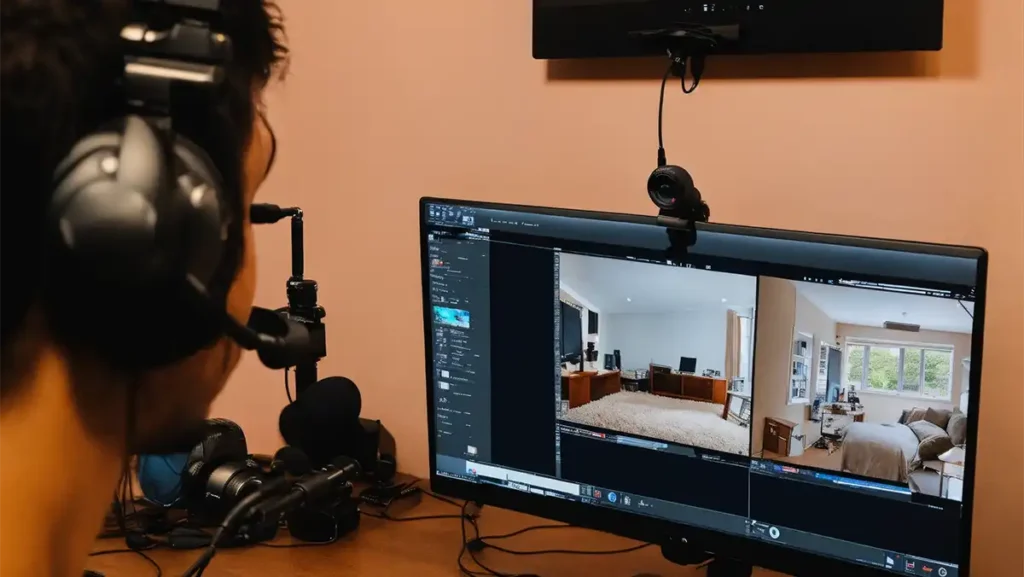
Must-Know Points to Remember
Virtual reality technology is an increasingly important tool in the real estate industry, with potential benefits for buyers and sellers alike. Buyers can view properties without having to be physically present, while agents can use this technology to better showcase listings and engage with potential buyers.
However, while virtual tours have their advantages, they cannot always provide a true representation of what it’s like to stand inside a property. In spite of these drawbacks, virtual reality offers real estate professionals an opportunity to revolutionize how they approach buying and selling homes, giving them access to research and bids on land that were not accessible before. Moving forward, more real estate agents are likely to implement virtual reality into their services as buyers and sellers become increasingly familiar with this technology.
Finding Virtual Reality Real Estate Properties
With the rapid rise of virtual reality, real estate agents are now taking advantage of this technology to reach their clients and give prospective buyers a preview of what they can expect when making an investment. Finding virtual reality real estate properties is relatively easy with the right research.
Real estate agents may be able to show virtual home tours, allowing buyers to get an inside look at properties from their own living room instead of scheduling in-person visits. Agents can also present 360-degree images of the interior and exterior of properties, providing buyers with a comprehensive look at what they may be buying. Finally, agents can even create 3D renderings of potential projects to give customers an idea of what changes they might make in a home or building they may purchase.
Some people, however, debate whether virtual reality is actually beneficial for finding real estate. They point out that nothing quite compares to actually walking through a space and feeling how it looks and functions in person. Furthermore, there are some risks associated with mistakenly believing what one sees in VR; a customer may see a space differently than it is if an agent has enhanced the visuals.
Supporters point out that virtual reality does eliminate much of the extra time associated with viewing multiple properties, running back and forth between locations due to its enhanced visuals – something that’s not possible without physically visiting the location itself and not every property might be worth the drive-by visit. With virtual reality viewers can also quickly compare floor plans or visualize how furniture will work in a narrow hallway or kitchen area. These elements are important for prospective buyers trying to make an informed decision on their next purchase.
In conclusion, finding virtual reality real estate properties gives customers many options when making their next investment decisions while still operating within safe boundaries guided by experienced agents who understand everything one needs to know about the market before investing in physical property. Virtual reality offers something unique by allowing customers to deeply explore each property with ease while making sure they find exactly what they want without traveling extensively or taking unnecessary risks during the process.
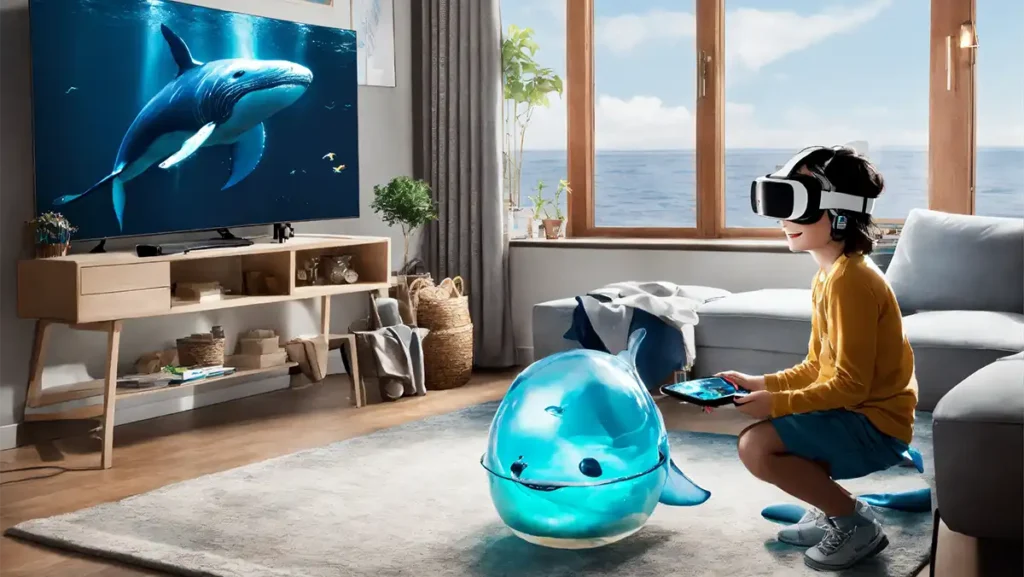
Common Questions and Answers
Are some real estate companies adopting virtual reality for tours and marketing purposes?
Yes, many real estate companies are increasingly adopting virtual reality (VR) technology for tours and marketing. As VR becomes more accessible and affordable, real estate companies are finding it an attractive option to reach potential buyers and tenants remotely. For example, they can create immersive 3D tours of properties that allow viewers to explore the space with ease from a remote device, such as their phone, tablet, or computer.
Additionally, VR allows agents to create “stereoscopic virtual walkthroughs” of the property, which provides a realistic view from any perspective in the room. Finally, top-notch virtual reality systems can also be used to generate renderings and simulations that show clients precisely what investing in a specific property would look like with changes in furniture or potential improvements. All of these features make VR an attractive tool for real estate marketers and tour guides who are looking to create an engaging and immersive experience for their customers.
What are the advantages of using virtual reality technology in real estate?
The advantages of using virtual reality technology in real estate are numerous. Firstly, it makes the process of house hunting much more convenient and enjoyable for prospective buyers, as they can do a virtual walk-through from the comfort of their own home. Secondly, it provides the opportunity to showcase properties to wider audiences without the need to physically move people around, saving money on travel and time.
Thirdly, VR technology allows estate agents to display features of properties in an interactive way that is engaging and exciting. Finally, it eliminates many common misunderstandings between buyers and sellers by helping everyone visualize more accurately what the property looks like inside and out. All in all, virtual reality has made major advancements in the field of real estate, giving agents a unique edge over their competition and increasing efficiency in sales.
What is the current status of virtual reality in the real estate industry?
The current status of virtual reality in the real estate industry is rapidly changing and evolving. VR technology is being used to allow potential buyers to virtually tour properties, get detailed information on the interior and exterior of a property, see 3D floor plans, explore neighborhoods, interact with agents, and even test products within their prospective homes.
For potential buyers, using virtual reality can help them make better decisions as they can get a much clearer understanding of a home before actually stepping foot inside it. On the seller’s side, 3D tours or VR video walkthroughs help keep listings fresh and exciting in an increasingly digital real estate market.
However, while VR technology has come a long way in modernizing the real estate industry, its challenges remain such as cost barriers due to expensive equipment that may be needed to create realistic 3D models for virtual tours. Additionally, there are also data security concerns with housing data being turned into VR experiences. Nonetheless, as technology advances and becomes more accessible we will continue to see increased utilization of virtual reality in the real estate industry.
You may like
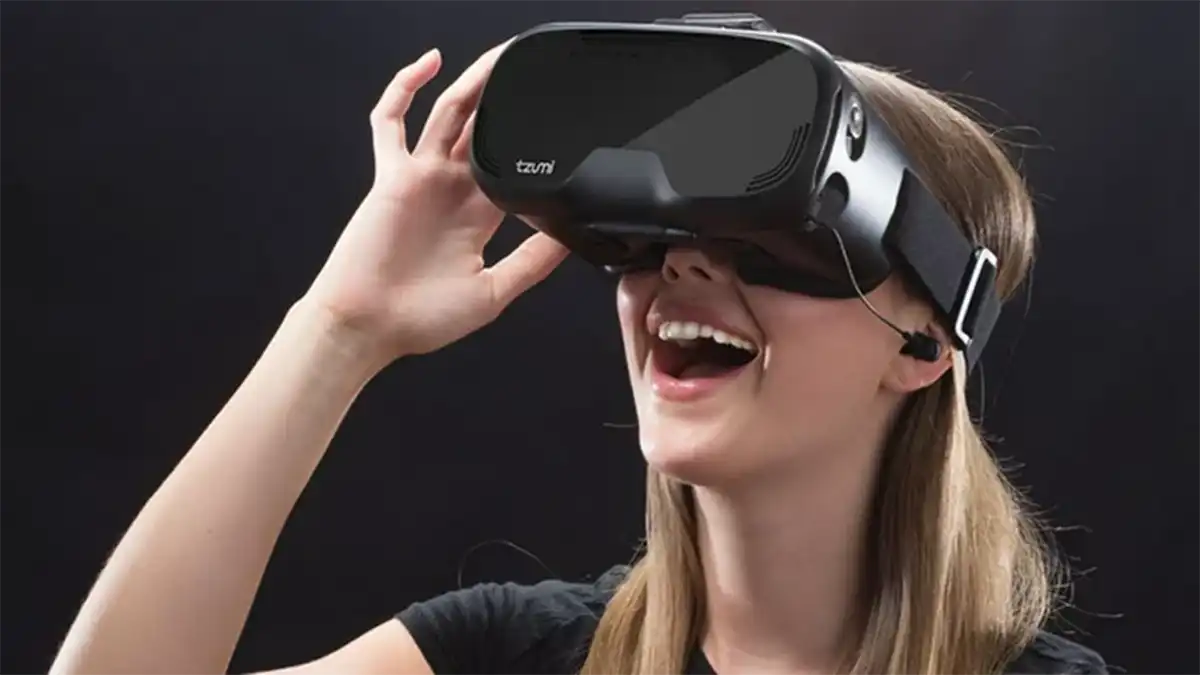
Dream Vision Virtual Reality
Dream Vision Virtual Reality is a cutting-edge VR headset that opens a gateway to captivating and lifelike virtual environments. Its comfortable design and versatile compatibility make it a vibrant addition to virtual reality.
Launch the VR application and follow any on-screen prompts or instructions to complete the calibration process. Ensure the lenses align correctly with your eyes and the straps are securely fastened.
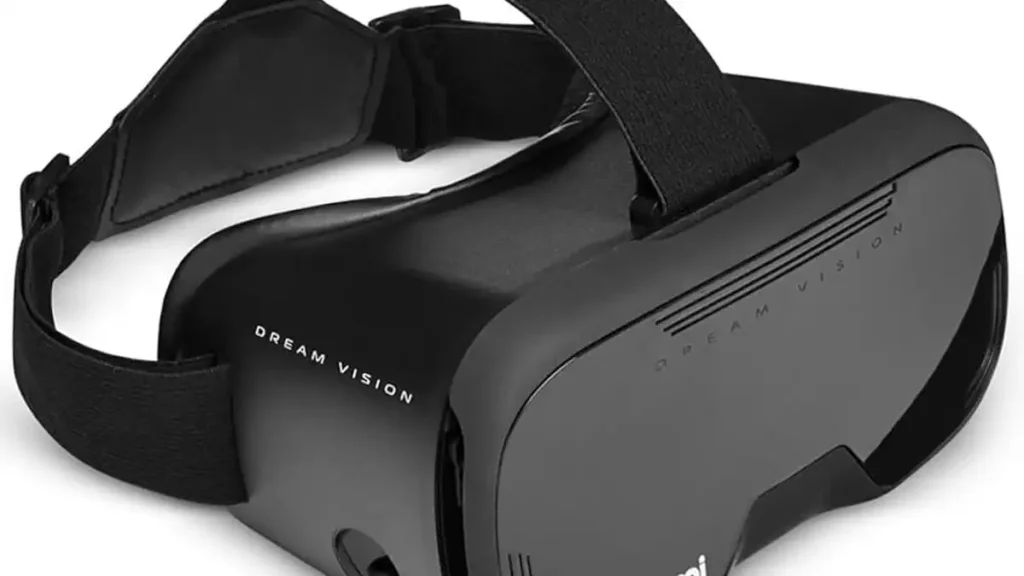
High resolution
The Dream Vision virtual reality system is a cutting-edge technology offering stunning, high-resolution graphics to bring immersive digital experiences to life. It is designed to be compatible with various devices, from gaming consoles to media players. This versatility empowers users to engage in immersive virtual activities, from immersive games to captivating VR movies and documentaries.
The headset’s display settings provide a spectrum of customizable options to optimize visual clarity and comfort. Using these settings, you can customize your virtual reality experience to suit your personal preferences and immerse yourself in captivating virtual landscapes with incredible realism. The headset also includes adjustable head straps and soft padding, ensuring a comfortable fit and allowing you to wear it for extended periods without discomfort.
Getting started with the Dream Vision VR headset is easy:
Find a suitable location to set up the headset and ensure it is properly connected to your smartphone.
Ensure the headset is securely attached to your phone, and the lenses are correctly aligned with your eyes.
Plug in your phone and power it up.
If you have a portable power bank, ensure it is fully charged to ensure consistent functionality during your VR experience.
The Dream Vision virtual reality system is a cost-effective option for enjoying immersive virtual experiences. It is also highly versatile and convenient, enabling you to enjoy VR games, watch immersive movies, and explore virtual tours. It is compatible with most mobile devices and easily connects to a PC or Mac. The headset is also lightweight and portable, making it an ideal choice for travelling and on-the-go entertainment.
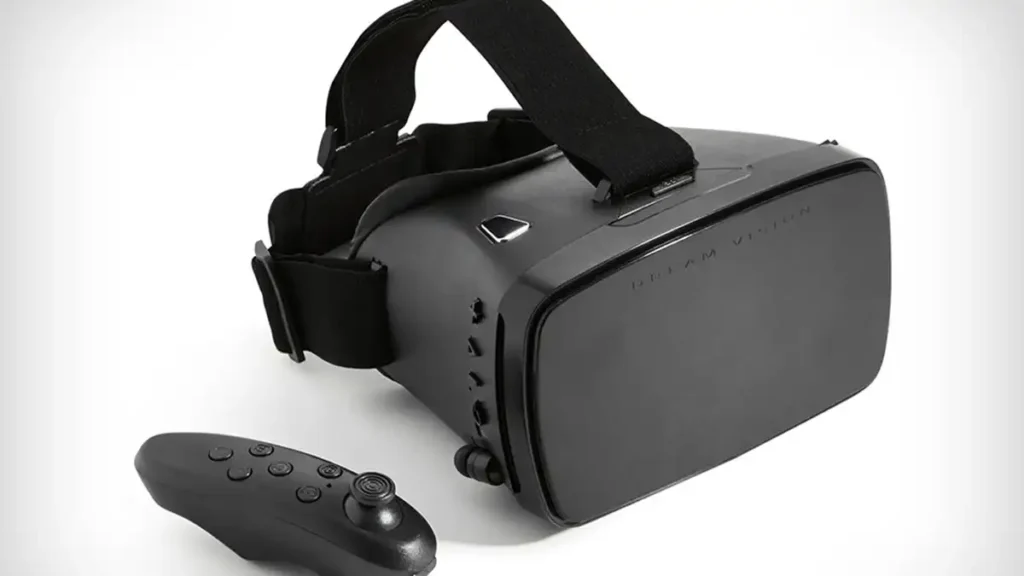

Wide field of view
The dream vision virtual reality system features an expansive field of view that allows users to explore lifelike virtual worlds. This immersive experience is ideal for gaming, multimedia consumption, and educational exploration. The headset also incorporates audio ports that allow users to connect their headphones for a more personalized and captivating VR experience.
The wider the field of view, the more realistic and immersive a VR experience will be. However, balancing its immersion with user comfort is important, as a wide FOV can cause neck strain. In addition, a wider FOV can make the world seem smaller and more unreal, which may cause motion sickness in some users. To minimize this effect, designers should ensure that critical interactive and narrative elements are visible within the FOV while reducing inappropriate content displayed in the peripheral area.
For this reason, most tethered VR headsets have a FOV of around 110 degrees or higher. For mobile VR, the FOV varies from headset to headset. The Varjo Aero headset, for example, has a FOV of up to 115 degrees. Moreover, the headset is compatible with various devices, including PCs and laptops.
To use a virtual reality headset, you’ll first need to launch the VR application or game you want to play. Next, place the headset on your head and align the lenses with your eyes. Finally, secure the straps around your head to prevent them from slipping or falling off. If you’re wearing glasses, align the lenses with your prescription. In addition, you’ll need to ensure that the straps are comfortably fastened so they don’t put pressure on your face or neck.
Intuitive controls
Dream vision virtual reality offers several intuitive controls that make it easy to navigate the interface. Users can use simple buttons and touchpad gestures to interact with virtual objects, navigate menus, and control VR experiences. In addition, the headset’s built-in high-fidelity audio technology creates an immersive experience that takes viewers into a new world. From a subtle whisper to the roar of an explosion, every sound is heard with clarity and depth.
Dream Vision Virtual Reality Headsets are designed to block out the external world, immersing users in a virtual environment where they can play games, watch movies, or engage in other activities. The device also includes sensors that track the user’s movements to create a realistic and engaging experience. The system has many applications, from social and multiplayer games to training and simulations.
To ensure a smooth and enjoyable virtual reality experience, following the manufacturer’s guidelines and usage instructions is important. These tips can help users avoid common problems, such as blurry visuals and discomfort. If the troubleshooting tips do not resolve the issue, users should consult the manufacturer’s website for more guidance.
Before starting a VR experience, securing the headset and checking that all components are functioning properly is important. It is also important to ensure that you stand in a clear space for accurate tracking and performance. Once the headset is securely positioned, follow any on-screen instructions to complete the calibration process. These instructions may include looking straight ahead and following a specific sequence of actions. It is also a good idea to keep the headset charged at all times, ensuring it continues functioning correctly.
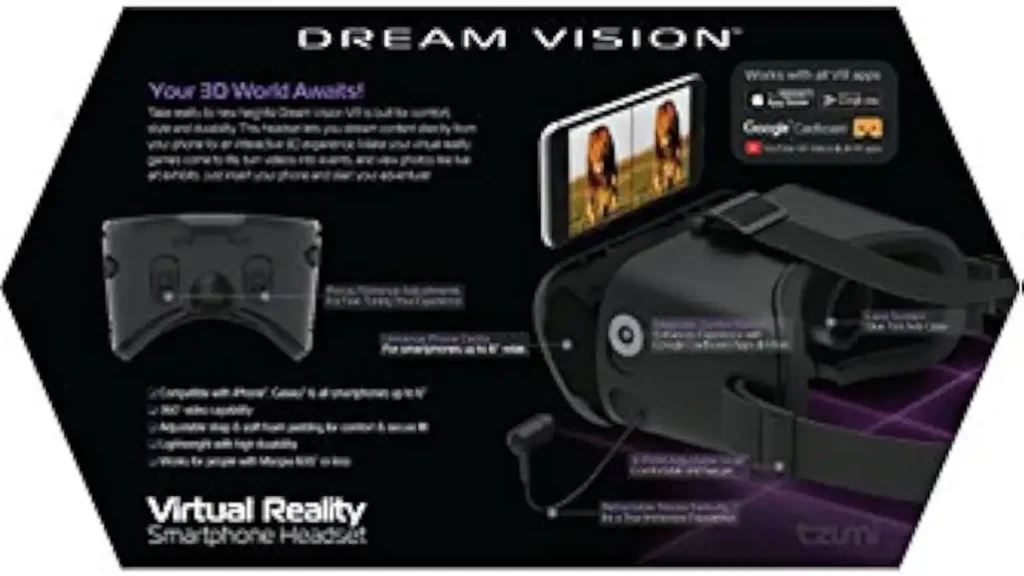
Comfortable design
The Dream Vision virtual reality system is designed for comfort, featuring adjustable straps and soft padding, providing a snug fit on different head sizes. It also comes with 3D earbuds that help reduce the noise in your headset. This lets you focus on the virtual world and prevents eye strain and neck pain. Moreover, it is light and easy to carry, perfect for long VR sessions. If you are experiencing discomfort or headaches, it is important to take breaks often and adjust the settings for your particular experience.
TZUMI Dream Vision virtual reality headset is an excellent option for those new to VR and who want to try it out. It is lightweight, comfortable and compatible with most smartphones. The headset is made with high-quality materials that make it durable. It is also compatible with popular VR apps and games. Moreover, it includes the full version of Killing Zone, one of the top VR games.
Aside from the comfort features of the headset, it is also a good choice for gamers and movie-watchers alike. It is compatible with various devices and can play immersive games, watch movies, or travel to other realms. The VR headset is also easy to set up and can be used at home or on the go.
To get the most out of your dream vision virtual reality experience, charge it and follow the manufacturer’s instructions. It is also a good idea to experiment with the head straps and padding and find the best configuration for your head size and shape. If you have trouble syncing or connecting the headset to your device, try restarting it or reinstalling the app.
Compatible with various devices
The Dream Vision VR headset is compatible with various smartphones, making it an accessible and versatile platform for immersive virtual adventures. By securely placing their smartphone into the designated compartment within the headset, users establish a direct visual and processing link that unlocks a treasure trove of captivating virtual experiences.
The headset features a streamlined design and ergonomic comfort to maximize user experience. Its adjustable head strap and cushioned padding accommodate different head sizes and shapes while ensuring a snug fit that minimizes discomfort during extended VR sessions. Moreover, its interpupillary distance (IPD) adjustment feature allows users to align the headset lenses with their eyes for optimal visual clarity and performance.
To ensure a seamless and enjoyable virtual reality experience, following the setup instructions provided by the VR application is important. These guidelines will help you correctly set up your Dream Vision VR headset and complete the initial calibration process. In addition, it is also advisable to stand in a clear space without any obstructions to ensure that your headset can track your movements accurately.
If you encounter any syncing or connectivity issues, it is important to follow the troubleshooting tips provided by the manufacturer. These tips will help you address common technical hiccups and resolve them quickly. In addition, if you are experiencing any audio or visual distortions, it is crucial to check the positioning of your phone and the headset lenses. In most cases, these issues can be resolved by recalibrating the headset. If you cannot resolve the problem, contact the manufacturer’s support team for additional assistance. This will help you return to enjoying your VR experience in no time!

4chan Virtual Reality
The anarchic messageboard 4chan Virtual Reality has been the breeding ground for internet memes like lolcats and Rickrolling. But it’s also notorious for its lawlessness and obscene content. One prank even led to Coventry cat tormentor Mary Bale being outed by the site’s users.
The dominant imaginaries around VR involve enhancing existing forms of communication. This contrasts with the utopian visions of a new virtual world.


It’s a rumor
The internet spawned a lot of rumors about VR, but it’s hard to know whether they are true. While many of them are harmless, there are also some that are incredibly disturbing. This is why it’s important to check the sources of your rumors. The most reliable source of information is a trusted news site. But, even if you trust the information on a news site, it’s still a good idea to verify it with other sources.
One of the most popular rumors about VR is that it will be used for pornography. This rumor has spread widely thanks to the popularity of VR headsets and new filming techniques. It’s not surprising that porn has found a new home in VR, as it offers the opportunity to create realistic-looking scenes. In fact, some sites have already released dick ton of VR porn.
Another popular rumor is that VR will be able to do everything that games can do now, but without the motion sickness and other downsides. Some gamers think that this is the future of gaming, but others argue that VR is not a viable platform for gaming at all. The main reason for this is that VR is not as powerful as traditional displays. It’s also expensive and requires a high-end PC to run it.
The founder of Oculus, Palmer Luckey, has been criticized for liking a bunch of Trump-supporting tweets. He also likes alt-right memes and WikiLeaks conspiracy theories. It’s clear that he doesn’t support the views of most of the mainstream technology community.





It’s a leak
Despite its reputation for lawlessness, 4chan Virtual Reality has produced some of the internet’s biggest memes. From lolcats to Rickrolling, the anarchic US message board has become a cultural phenomenon with 22 million page impressions per day. While most of the site’s users are decent people, its anonymity has allowed it to exploit a darker side. This includes promoting conspiracy theories, spreading false news, and encouraging hate speech. It has even been responsible for outright sexism and homophobia. It has also been accused of pranking people for sex-related reasons.
The anarchic nature of the site has been a boon for viral content creators, but it can also be harmful to real-world people. For example, when CCTV footage emerged of Coventry cat tormentor Mary Bale stroking her feline before dumping it in a wheelie bin, the website exploded with outrage. The ensuing backlash resulted in her being sacked from her job.
In other cases, 4chan users have hacked into advanced artificial intelligence models to spread xenophobic propaganda and promote anti-Semitism. This has alarmed Meta, the company behind the LLaMA model. Users have been able to use the technology to create their own chatbots that are capable of generating a range of inappropriate and obscene content. The LLaMA hack has also prompted the creation of several variants of customised smutbots that can describe graphic scenes of gore and violence. This includes scenes of babies in blenders and neo-Nazi sexual assault.
Despite these risks, many users believe that they should be allowed to make a living from their work. However, the company is not willing to make exceptions for this group of people. This has led to a legal battle that will likely end up in court. If the court rules in favour of the company, it may be difficult for the plaintiffs to recover their losses.

It’s a game
The imageboard website 4chan Virtual Reality is an online community that’s mainly used by teenagers. Its boards discuss video games and anime, but it’s also known as a source of many memes and political movements. It’s been at the centre of several controversies, including Gamergate and various cyber attacks. Parents may be concerned about the site’s potential impact on their teens’ online safety, but they should know that it’s possible to set parental controls on broadband and mobile networks.
Although the site has rules in place, some boards contain inappropriate content that could be harmful to your teen’s online safety. For example, the /b/ board allows hate speech and specific pornography. Moreover, it is not moderated by staff and is therefore dangerous to teens. The site is also a source of hacktivism and has been the target of multiple violent attacks. The other iterations of 4chan, such as 8kun and 16chan, are less moderated and should also be avoided by teens.
Gamers will need a high-end PC to get the best experience from VR, which can cost over $1000. Until then, it will be a gimmick for most people. /v/ posters are jaded NEETs that don’t understand what they need to have fun and blame gaming corporations for everything.
A poster on the popular 4chan Virtual Reality message board UploadVR claimed that Bethesda is working on a virtual reality version of Elder Scrolls V: Skyrim. Whether this will be a separate product or a port of the special edition that launched last year on PS4, Xbox One, and PC is unclear. However, the poster did mention a new project called Starfield.



It’s a platform
As a platform, 4chan has been responsible for many of the internet’s biggest memes. However, the site’s anonymity has also led to a number of privacy concerns. Its users have been accused of cyberbullying, doxxing, and promoting fringe ideologies that can lead to harmful real-world consequences. These issues have fueled calls for the site to be shut down and banned.
While some of the site’s pranks have been relatively harmless, others have been quite disturbing. For example, when CCTV footage of a woman in Coventry stroking her cat before dumping it in a wheelie bin emerged, 4chan’s army of cyberpranksters quickly outed her and bombarded her with death threats. Another 4chan favourite is Pedobear, a cartoon character who appears cute and harmless but performs graphic sex acts. Other stunts have been loosely political in nature, such as calling on Google Hot Trends to make it harder for people to find the Church of Scientology’s website.
As for VR, it’s a gimmick for now. It’s expensive and there aren’t any good games out for it yet. Until we get better immersion technology and habtic feed back, it will be more of a novelty than anything else. If you’re a simfag then it might be worth the investment but otherwise, it’s just another fad that will fade away like the 3D TV.

Virtual Reality Split Screen
Virtual reality split screen is a feature that allows you to see two different scenes simultaneously on your screen. It is beneficial and available in most VR games. It is also available in many augmented reality applications.
Using VR in marketing can increase brand awareness and provide customers valuable information. However, there are some risks involved in using this technology.
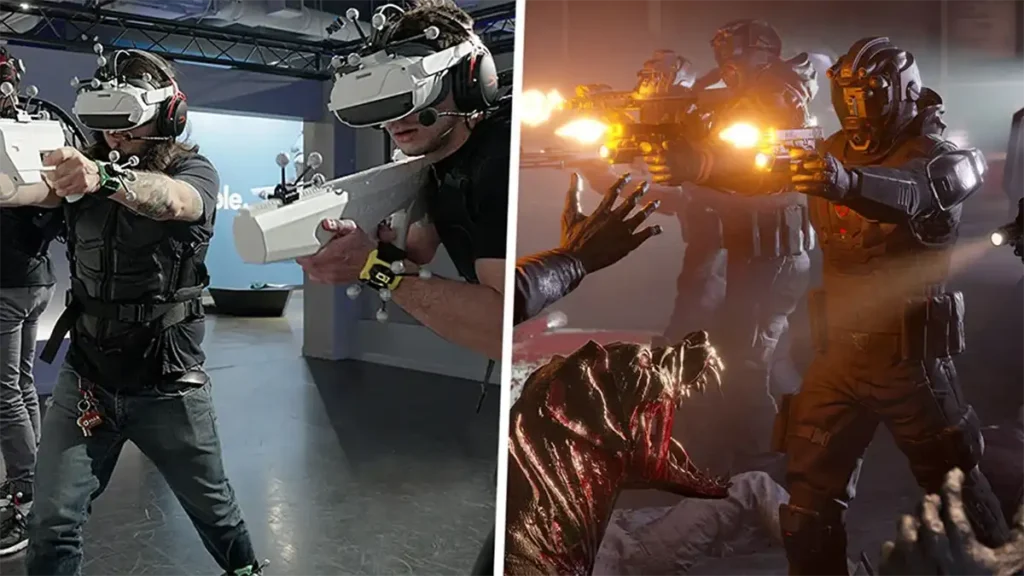
Split Screens
Virtual Reality Split screen are one of cinema’s oldest techniques, allowing storytellers to communicate nuanced narrative aspects in a powerful and visually striking manner. In addition to conveying parallel narratives and contrasting visuals, this technique can create dynamic action sequences that keep viewers engaged.
Despite its ancient origins, split screen has adapted to the technological advancements of filmmaking over time. With the advent of digital video technology, split-screen compositions have become more accessible to execute and are frequently employed in films and music videos. Split screen has also become an integral part of editing, enabling editors to create more complex and dynamic shots.
Split-screen often reveals multiple perspectives, illustrating how others perceive a character’s actions and reactions. This technique has been employed in the acclaimed Fox TV series 24 and Snapchat’s original content ‘Two Sides’, which followed two young lovers navigating their relationship with contrasting perspectives. It has also been used in films by director Edgar Wright, who has utilized it to elevate his distinctive visual style and evoke emotion in the audience.
When used in VR, a Virtual Reality split screen can enhance the viewing experience by making it more immersive. This is particularly useful in virtual reality because it can be challenging to navigate and see the entire video using a headset. Moreover, splitting the screen can allow you to watch a video without taking off your headset.
There are many ways to use Virtual Reality split screen, including streaming a video on a separate computer screen or using an app that allows you to share your desktop with other users. These apps are usually free, though some may require a paid subscription. Many of these software programs also offer several preset split-screen options; some even have an entire module dedicated to this feature.
Split screens in VR can be beneficial, especially if you want to show your friends or family something you’re doing on your PC. However, you should be aware that the quality of VR videos is much lower than that of non-VR movies because VR requires a higher frame rate to prevent motion sickness.

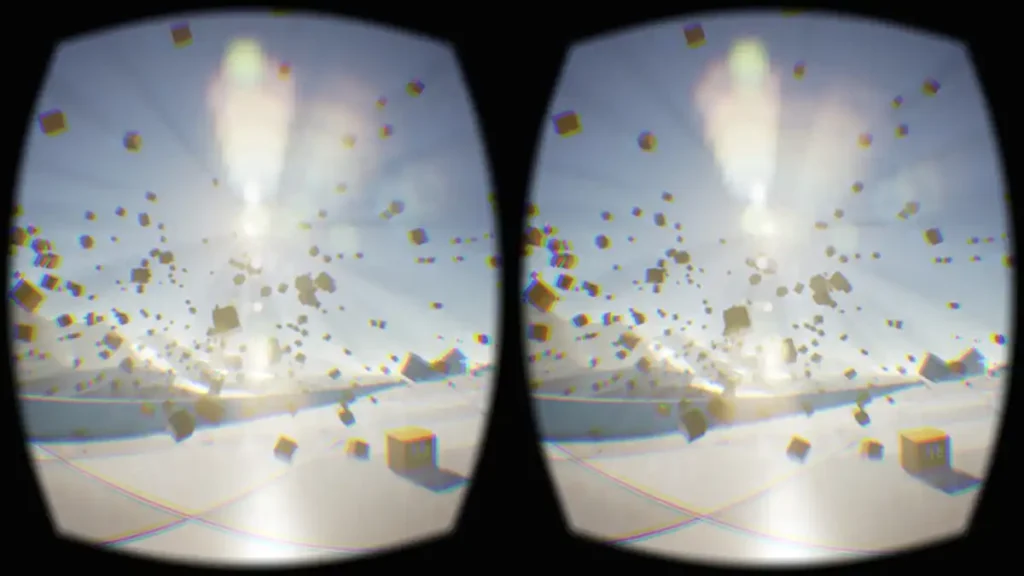
Pinnacle
Pinnacle is a video editing software program that offers several different split-screen templates. These can be used to create one-of-a-kind video projects and are ideal for use in virtual reality. They are easy to use and include all the features needed to produce professional-quality videos.
In VR, the split screen effect looks like a single image that occupies 90 degrees of your field of view. To use a Pinnacle template, navigate to Library > Montages and Templates > Split Screen Templates. Then, drag the template thumbnail into the timeline to open it in the Sub Editor.

Oculus Rift
After years of hype and scepticism, the first consumer virtual reality headset has finally arrived. Oculus Rift is a fabric-covered headset with flip-down headphones, an external sensor and two controllers. It connects to your computer with HDMI, USB, and DisplayPort cables, requiring a reasonably powerful PC to run smoothly.
The Rift was created by a company called Oculus VR, which was bought by Facebook in 2014 for $2 billion. Founder Palmer Luckey’s original prototype was a cheap, crude device that registered your head movements but didn’t track your position or let you control anything. It still felt magical, though, which convinced Zuckerberg to buy the company.
Since then, the Oculus Rift has improved dramatically. The latest Rift S model has a more refined design with a higher-resolution screen and less-distorting lenses. It’s also lighter and has a more comfortable face rest that doesn’t leave a ring around your eyes after wearing it too long. It’s not as immersive as the HTC Vive, but it’s still a significant step forward for VR.
You can play many games on the Rift, including traditional video games like EVE Valkyrie and Lucky’s Tale. But I think the headset’s real potential lies in experiences beyond gaming. Imagine enjoying a court-side seat at a basketball game or consulting with your doctor from across the country or the world. That’s what makes the Rift worth buying for gamers and non-gamers alike.
While the Rift is a phenomenal piece of hardware, it’s not without problems. Many people experience motion sickness when using virtual reality, and some never get used to it. If you experience this, taking frequent breaks and drinking water is essential. Also, it’s best to wear the Rift over glasses instead of contacts.
Oculus has various non-game content, including short VR movies and travel videos. Henry, for example, is an adorable story about a hedgehog, and it’s better than most of Pixar’s recent animated shorts. There are documentaries about the rainforest, Nepal, and other locations.

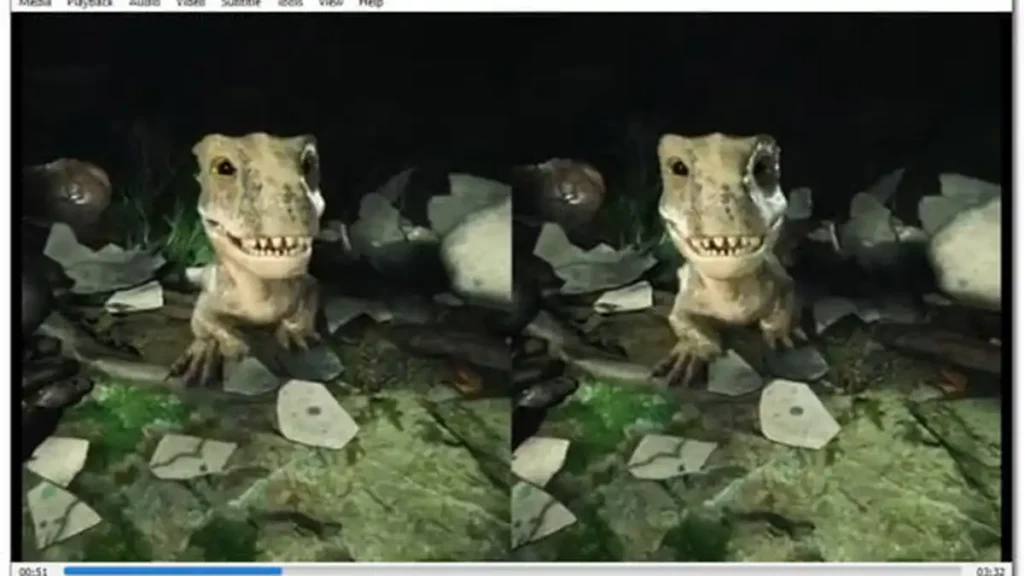


HTC Vive
HTC Vive is a virtual reality system that allows you to enter an immersive world. The headset and controllers work together to create a platform for endless games and experiences. Whether you’re an avid gamer or looking for something new and exciting to try, VR offers an experience unlike anything else. There are many different ways to use HTC Vive, including educational simulations, virtual tours of famous landmarks, and artistic creations.
The Vive is a PC-based virtual reality system that requires a high-end computer. It is not a plug-and-play device but relatively easy to set up. The setup process includes several steps, including installing the VR software and adequately connecting the hardware. It’s essential to follow the instructions carefully to avoid potential errors.
Once you’ve installed the VR software and connected all the cables, it’s time to test your headset and controllers. Launch a VR experience or video to ensure the headset functions correctly. You can also check the audio output and controller functionality by interacting with objects in the virtual environment.
Next, adjust the headset fit to ensure it’s comfortable on your head and positioned correctly in front of your eyes. Taking a break during long VR sessions is an excellent idea to prevent eye strain and other physical discomfort.
Finally, test the headset tracking by walking around the play area and observing the movement of your virtual avatar in the VR environment. This will help you identify any issues with the headset’s trackers and resolve them before attempting to use it again.
HTC Vive is one of the most popular VR systems available but has shortcomings. For starters, the system isn’t cheap, and it can require a significant amount of space to operate. It’s also not as intuitive to use as the Oculus Rift, and it can have problems with its display.
Despite these drawbacks, the HTC Vive is still an excellent choice for users who want to explore the possibilities of virtual reality. It’s available for purchase from third-party sellers and some tech retailers, and it’s a solid option for anyone looking to get into VR.

Oculus Quest 2 Game Review – Onward VR

Dream Vision Virtual Reality

Virtual Reality Rumors

Experience the Thrill of Virtual Reality Movies in Your Home 2024

Giantess VR – Explore a House

Explore the Virtual Reality Social Scene with These Top Platforms
Trending
-

 VR Movies6 months ago
VR Movies6 months agoExperience the Thrill of Virtual Reality Movies in Your Home 2024
-

 VR Games5 months ago
VR Games5 months agoGiantess VR – Explore a House
-

 Virtual Reality6 months ago
Virtual Reality6 months agoExplore the Virtual Reality Social Scene with These Top Platforms
-

 VR Games6 months ago
VR Games6 months agoInto the Radius on Meta Quest 2
-

 Virtual Reality5 months ago
Virtual Reality5 months agoVr app for vr shinecon review 2024
-

 Nintendo Switch6 months ago
Nintendo Switch6 months agoUnlock the Power of Virtual Reality with Nintendo Switch!
-

 VR Games6 months ago
VR Games6 months agoPokequest VR
-

 PS4 VR6 months ago
PS4 VR6 months agoExperience the Future of Gaming with PS4 Virtual Reality

